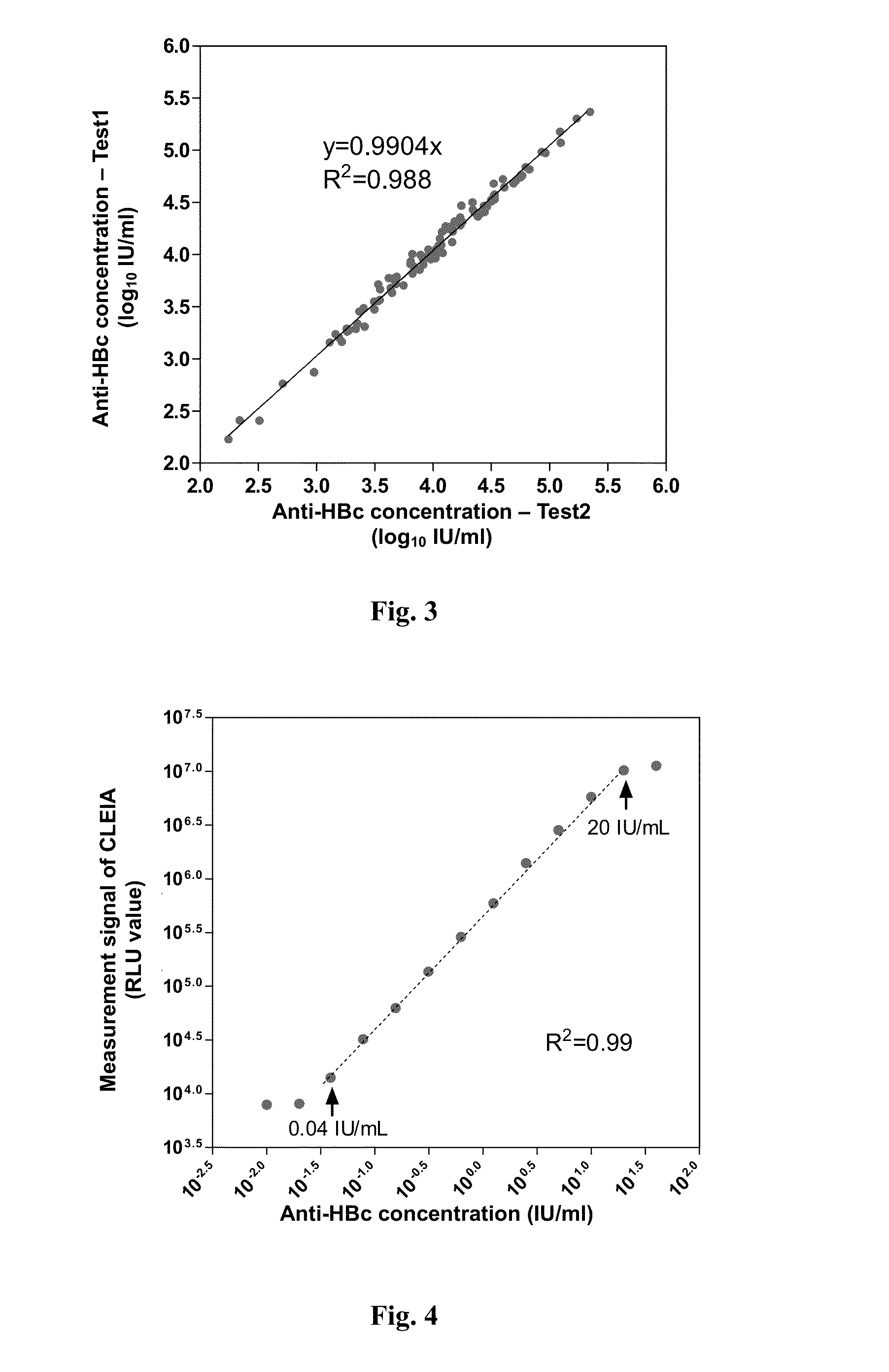Anti-hbc quantitative detection method and uses thereof in monitoring and controlling disease progression of chronic hepatitis b patient and in predicting therapeutic effect
a quantitative detection and quantitative detection technology, applied in the field of detection of hepatitis b virus (hbv) and clinical diagnosis of viral hepatitis type b, can solve the problems of patients not being able to stand, the potency of over-current drugs is limited to achieve hbsag loss or hbsag, and the use of the method is not reliabl
- Summary
- Abstract
- Description
- Claims
- Application Information
AI Technical Summary
Benefits of technology
Problems solved by technology
Method used
Image
Examples
example
1. Dual Antigen Sandwich Assay Anti-HBc Quantitative Enzyme-Linked immunosorbent assay (ELISA) method
[0060]1.1 Preparation of Immobilized Antigen and Labeled Antigen
[0061]In the method, the immobilized antigen and labeled antigen as used were hepatitis B virus core antigen (HBcAg) capable of specifically binding to anti-HBc antibodies in a sample, the antigen could comprise full-length amino acid sequence of HBcAg (Cp183), or could merely comprise an amino acid sequence of primary immune-dominant zone of HBcAg (Cp149). The HBcAg used in the present invention was obtained by recombinant expression with E. coli and purification. As to the expression and purification methods for Cp149 recombination antigen, one may refer to the methods disclosed by Adam Zlotnick, et al[6], while as to the expression and purification methods for Cp183 recombination antigen, one may refer to the methods disclosed by An Li, et al[5]. In the present invention, Cp149 recombination antigen was usually used a...
PUM
| Property | Measurement | Unit |
|---|---|---|
| Length | aaaaa | aaaaa |
| Length | aaaaa | aaaaa |
| Concentration | aaaaa | aaaaa |
Abstract
Description
Claims
Application Information
 Login to View More
Login to View More - R&D
- Intellectual Property
- Life Sciences
- Materials
- Tech Scout
- Unparalleled Data Quality
- Higher Quality Content
- 60% Fewer Hallucinations
Browse by: Latest US Patents, China's latest patents, Technical Efficacy Thesaurus, Application Domain, Technology Topic, Popular Technical Reports.
© 2025 PatSnap. All rights reserved.Legal|Privacy policy|Modern Slavery Act Transparency Statement|Sitemap|About US| Contact US: help@patsnap.com



